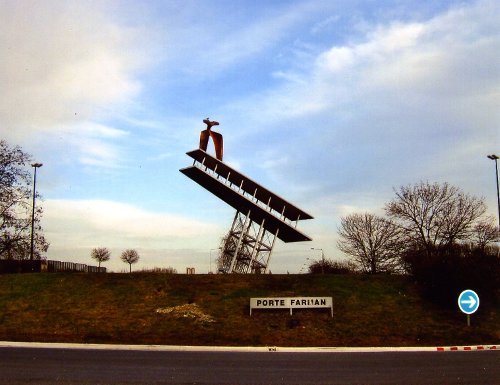First flying lesson
In the beginning of previous chapter has been described how Charles de Lambert fully devoted himself to ‘hydroplanes’. He is also interested in air navigation and motorised flight. Becoming enthusiastic by the promising results of the Wright brothers his belief in the future of aviation was confirmed by his first flying lesson of 12 minutes by Wilbur Wright in Le Mans on October 28 1908 after having had an introduction flight of 6 minutes and 15 seconds on September 28 1908. Charles de Lambert is one of the total of 43 passengers – amongst whom the 109 kilos heavy Léon Bollée – who experience a flight as part of ‘commercial strategy’ in Camp d’Auvours.
Two days later Henri Farman makes the first nonstop flight from Bouy ‘Champ de Châlons’ to Reims, landing near the cellars of Champagne Pommery after 27 kilometres in 20 minutes. In an advertisement of Les Frères VOISIN you can read Henri Farman “sur son vieil aéroplane VOISIN s’est envolé par-dessus les bois, les routes, les villages, les cours d’eaux, les voies ferrées à 100 mètres de hauteur” (“with his old airplane VOISIN has flown over the forests, the roads, the villages, the streams, the railroads at a height of 100 metres”).


Fig. 6-13
Fig. 6-14
Homage to Henri Farman at a roundabout in Reims by means of a
panel and an aircraft wing on which a flying man of rusted copper
creation of William Noblet inaugurated June 14 1997
Friday March 31 2006

Fig. 6-15
Homage to Wilbur Wright at the beginning of a street (the tunnel) in Le Mans
Tuesday July 8 2008

Fig. 6-16
Ikaros monument to Wilbur Wright, to all pioneers and to all victims
of aviation
creation of sculptor Paul Landowski on Place des Jacobins in Le Mans
unveiled July 17 1920
Tuesday July 8 2008
On November 17 1908 Charles de Lambert holds the control-column for the first time. Winter weather conditions prevent at the end of 1908 the training of the pilots in Le Mans. Moreover military matters sometime forbid Wilbur Wright to fly on account of artillery practice. Cannes, Hyères and Bordeaux spontaneously propose to receive him. The commitment of local ‘lobbyist’ Paul Tissandier turns the scale in favour of Pau, situated in a milder climate, at the foot of the Pyrenees. After all preparation and hard work at Le Mans, Wilbur Wright is offered ‘the works’ and he will have more comfortable stay in Pau in the Grand Hotel Gassion.

Fig. 6-17

